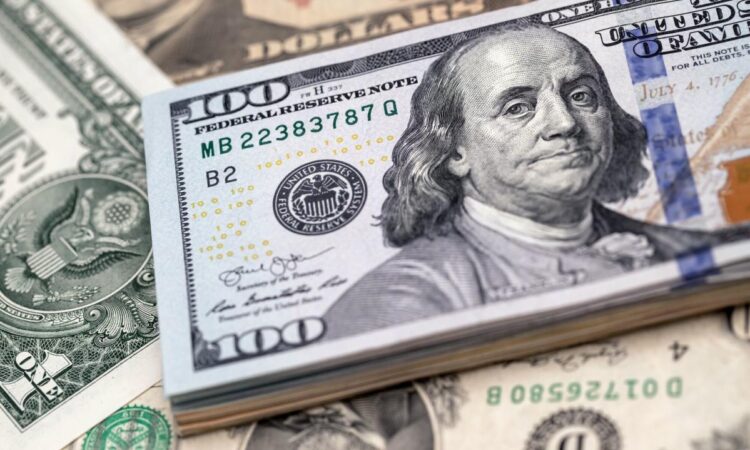
(Bloomberg) — The US dollar jumped the most in two weeks after the blowout jobs report, pushing the currency back near levels last seen before the Federal Reserve’s December pivot and wrong-footing traders betting on imminent interest-rate cuts.
Most Read from Bloomberg
The Bloomberg Dollar Spot Index rose as much as 0.8% after Friday’s employment data showed a January surge in payrolls alongside a boost in hourly wages, pushing bond yields up sharply. Against the yen, the greenback rose 1.5% to a session high of 148.58, the largest advance since Dec. 19.
The dollar gained against all the Group-of-10 currencies Friday, with the Norwegian krone, yen and New Zealand dollar leading the losses. On an intraday basis, the euro dropped the most in a month, the Swiss franc had its worst move since May and the pound, its steepest pullback since October.
“The signal from payrolls seems pretty clear — the dollar will continue to at least hold its ground so long as US jobs demand remains strong and wages stay firm — in essence refreshing the US exceptionalism narrative,” said Patrick Locke, a foreign-exchange strategist at JPMorgan Chase & Co.
Read more: US Payrolls and Wages Surge, Likely Keeping Fed Rates on Hold
The jobs report Friday showed US employers added 353,000 workers to their payrolls last month while hourly wages jumped 0.6% on a monthly basis, the most since March 2022.
The data sent Treasury yields surging across the curve, pushing the dollar back near where it was before Fed Chair Jerome Powell in December signaled the bank was likely to start easing policy this year. Swaps traders further pared bets on a March interest-rate cut to around 20%, though they are still placing high odds that the Fed will kick off a series of cuts in May.
Locke said the expected pace of cuts still “looks aggressive” compared with other central banks, which “should help put a floor under the dollar as well.” Data released Friday by the Commodity Futures Trading Commission for the week ended Jan. 30 shows non-commercial traders — a group that includes hedge funds, asset managers and other speculative market players — are bearish on the dollar but have pared the net short position in recent weeks.
Read more: Treasury Yields Surge as Hot Jobs Data Dashes Rate-Cut Hopes
Heading into 2024, forecasters expected the yen to gain the most from divergent central bank monetary policy as the Fed nears its easing point just as the Bank of Japan reconsiders its long-running negative-interest-rate policy.
But the timing of such a shift remains in doubt. Resilient US economic data have called into question the extent of rate cuts to come from the Fed, while the Bank of Japan has given few clear signals of exactly when it will look to tighten policy.
The dollar closed out its fifth-straight week of gains Friday, the longest such streak since September. The Japanese currency has lost nearly 5% this year, the worst performance among the G-10, and continues to face pressure as bets on Fed easing are pushed back.
“A later start to Fed easing is suggestive of a more resilient USD and thus implies less scope for sharp JPY gains vs the USD assuming the BoJ hikes rates in next couple of months,” said Jane Foley, head of FX strategy at Rabobank.
(Updates charts, levels, BBDXY close, and adds CFTC data.)
Most Read from Bloomberg Businessweek
©2024 Bloomberg L.P.
